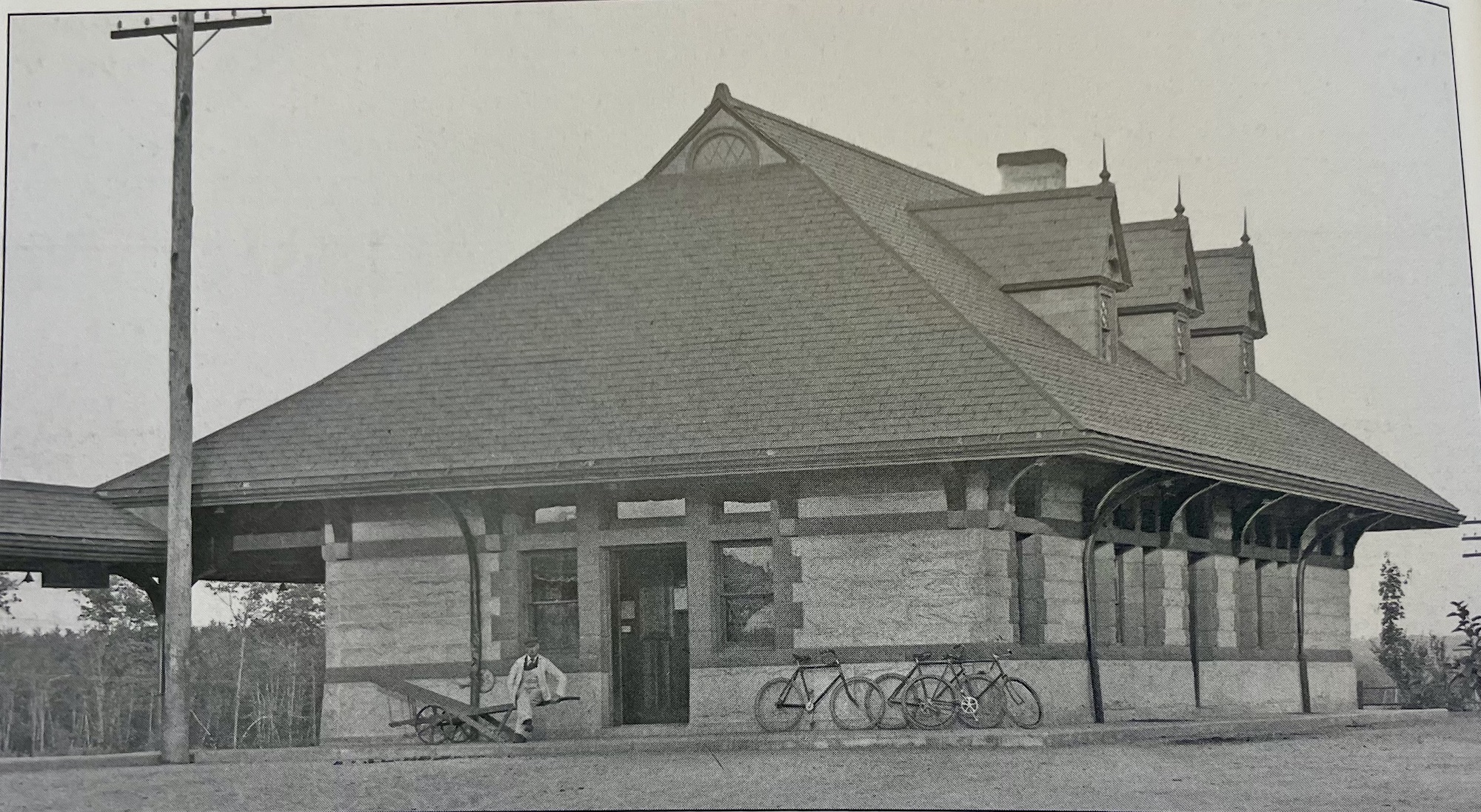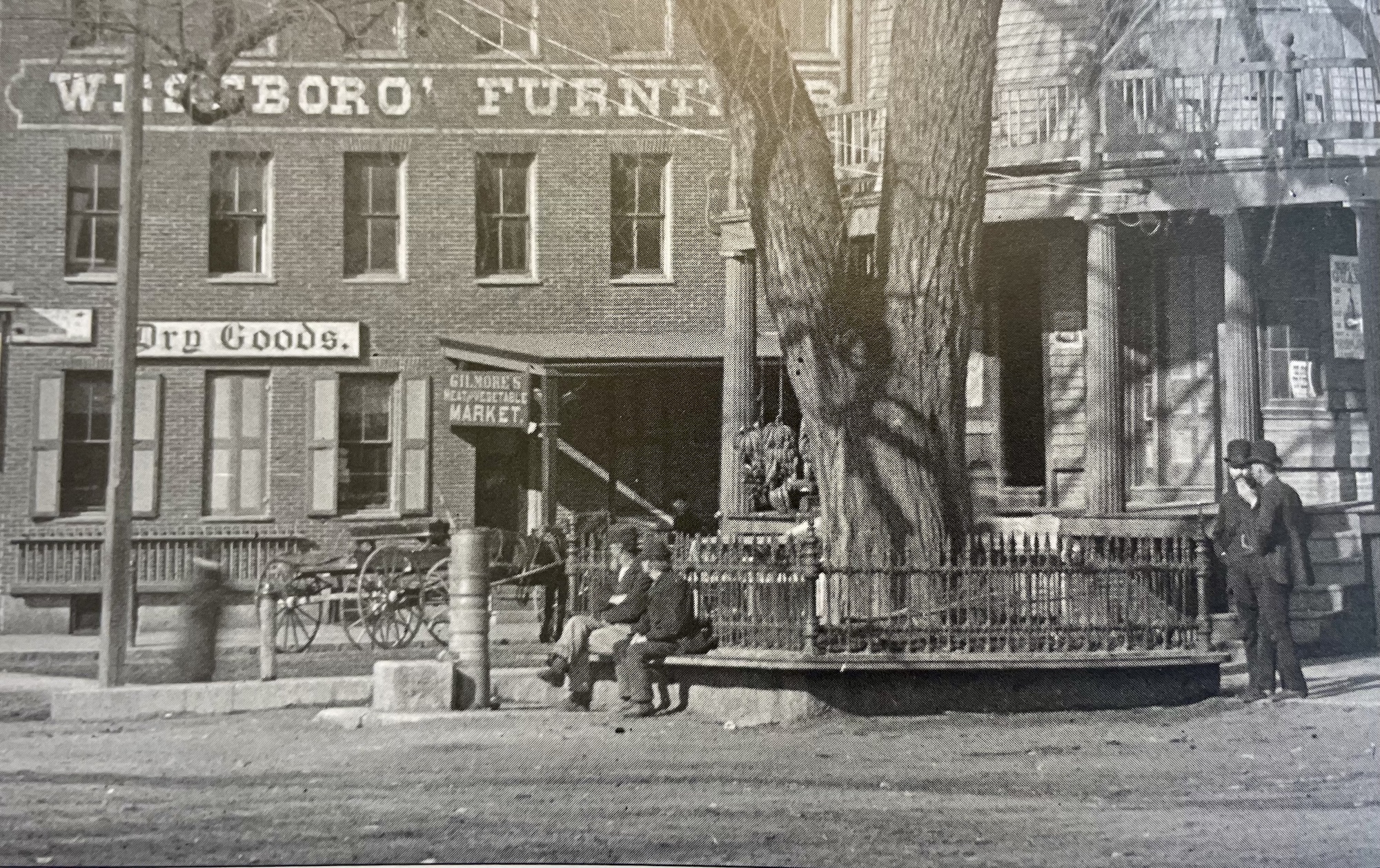
By Kate Tobiasson
History Columnist
WESTBOROUGH – Even before it was officially the 100th town in Massachusetts, Westborough had many vital crossroads, making it an ideal place for regional commerce and trade. Indigenous people had long ago carved trails that crisscrossed across town. The Narragansett Trail—where South Street now runs—led to Providence, and the trail over Milk Street continued northwest to Canada. Throughout the colonial era, trade increased and more roads were developed. The Old Connecticut Path was a major path for trade, and it wound its way through Westborough. Still, it wasn’t until the Industrial Revolution that Westborough saw a dramatic change in the landscape and development of the town.
With industrialization, local investors began to organize independent railway companies and railways, connecting the cities of Worcester, Boston, and Providence to the rest of the country. The Boston and Worcester Railroad puffed its way through downtown Westborough in 1834, bringing with it the opportunity for huge industrial growth in town. The train stopped at the center of town, making it a desirable and commutable location for industry owners and their employees.
In 1897 Westborough welcomed the first electric streetcar to town. By then the town was a major supplier of straw hats, sleighs, bicycles and the Locomobile, a small steam-powered automobile. Electric streetcars hauled freight for local business owners, and offered transportation for low and middle-class workers to the factories operating at the center of town.

The trolleys worked to transport children to school, shoppers to village stores, and beachgoers from throughout the region to Lake Chauncy. Thanks to the central location of the train station and the streetcar stops at the center of town, a great number of shops opened, supplying both locals and travelers with everything from lace curtains, bicycle seats, candies, and cigarettes to a pharmacy to photography studios. To help house the growing workforce and travelers, many hotels, inns and rooming houses dotted the roads surrounding the center of town. Westborough was a bustling, thriving town with a steady stream of travelers on the local streetcars and from the railway.
Public safety on both the electric streetcars and the trains was a large concern. There were frequent accidents, many of which resulted in traumatic injuries and even death. There was great controversy in town about how to best manage the tracks, and maintain the public’s safety. Further complications like snow in the winter often made travel impossible, and a huge fire in February of 1915 destroyed the streetcar trolley barn, limiting availability and access to streetcars.
The effects of World War I meant a change in industry, and many of the factories in Westborough closed their doors. Personal automobiles became largely preferred, and travel on the tracks decreased. The trolley lines were consolidated and later dismantled, only the shadows of their rapid development and short-term popularity remaining.
During a relatively brief period, the burgeoning popularity of streetcars and railway transport had a tremendous effect on Westborough’s economic development, as well as the formation of local roadways and traffic patterns. Today, the rotary in the middle of Westborough stands where the trolley circle once orbited, exchanging passengers. Storefronts still stand around the circle, many of the buildings dating back to the bygone era of streetcars and trains. The Boston and Worcester Railroad bridge still crosses East Main Street, much to the chagrin of 18-wheelers and local residents. The streetcars may have disappeared, and the train station has been reimagined, but the impact of these revolutionary means of transport are still there, if you only know where to look.

















